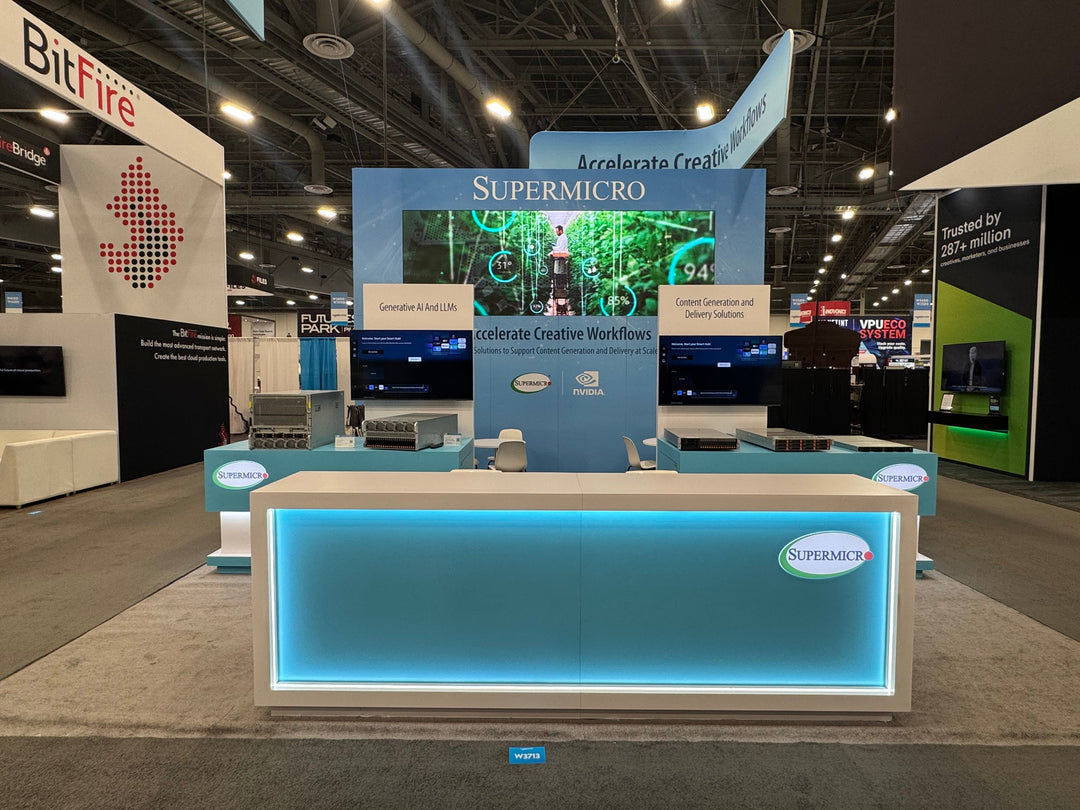Trade shows have long been a cornerstone of business marketing and networking. They provide a unique platform for companies to showcase their products, engage with potential clients, and strengthen their brand. However, as technology and societal preferences evolve, so too do the ways in which trade shows operate. From booth design to the structure of the events themselves, the trade show industry is undergoing a significant transformation. This article explores the evolution of booth design, predicts future trends in the industry, and examines the ongoing debate between virtual and physical trade shows.
The Evolution of Trade Show Booth Design Over the Decades
Early Beginnings: Simplicity and Functionality
In the early 20th century, trade show booths were simple and utilitarian. They often consisted of basic tables and banners, with a primary focus on functionality. The goal was straightforward: present products and distribute printed materials to attendees. Booths were designed to be cost-effective and practical, prioritizing information over aesthetics.
The Rise of Branding in the Mid-20th Century
As industries expanded and competition grew, companies began to recognize the importance of branding. By the 1950s and 1960s, trade show booths started to incorporate bold colors, logos, and product displays that reflected the company’s identity. This era marked the beginning of experiential marketing, with booths aiming to leave a memorable impression on attendees.
Technological Integration in the 1980s and 1990s
The advent of new technologies in the late 20th century brought significant changes to booth design. Televisions, video presentations, and interactive displays became standard features, enabling companies to create more engaging experiences. Modular booth designs also gained popularity, offering flexibility and ease of transportation.
Modern Era: Immersive and Interactive Experiences
Today’s trade show booths are a blend of cutting-edge technology and innovative design. Augmented reality (AR), virtual reality (VR), and touchscreen interfaces are increasingly common, creating immersive experiences that captivate attendees. Sustainability has also become a priority, with many companies opting for eco-friendly materials and reusable structures.
What the Future Holds for Trade Show Booths
Emerging Trends in Booth Design
The future of trade show booths is likely to be shaped by advancements in technology and changing consumer expectations. Some emerging trends include:
-
Personalization: Booths may leverage data analytics to create tailored experiences for individual attendees, enhancing engagement and relevance.
-
Sustainability: With growing environmental awareness, sustainable materials and practices will become integral to booth design.
-
Minimalistic Aesthetics: Clean, minimalistic designs that emphasize functionality and branding are expected to gain traction.
Technological Innovations
-
Holographic Displays: Holography could revolutionize product demonstrations, offering a dynamic and space-efficient way to showcase products.
-
AI-Powered Interactions: Artificial intelligence (AI) could be used to provide personalized recommendations and real-time assistance to visitors.
-
Hybrid Experiences: Booths might integrate virtual components, allowing remote attendees to participate and interact in real time.
Adapting to Global Trends
As globalization continues to influence the business landscape, trade show booths will need to cater to diverse audiences. Multilingual support, culturally inclusive designs, and accessible layouts will become standard features.
Virtual Trade Shows vs. Physical Booths: What’s the Future?
The rise of virtual trade shows has sparked a debate about the future of in-person events. Each format offers unique advantages and challenges:
Benefits of Virtual Trade Shows
-
Accessibility: Virtual events eliminate geographical barriers, enabling participation from anywhere in the world.
-
Cost-Effectiveness: Companies can save on travel, logistics, and booth construction costs.
-
Environmental Impact: Digital events have a smaller carbon footprint compared to physical trade shows.
Advantages of Physical Booths
-
Tangible Interactions: Face-to-face meetings and hands-on product demonstrations remain invaluable for building trust and relationships.
-
Networking Opportunities: In-person events foster spontaneous connections and collaborations that are hard to replicate online.
-
Brand Experience: Physical booths allow for a more immersive brand presence and experiential marketing.
The Hybrid Future
The future likely lies in a hybrid model that combines the best of both worlds. Companies can use virtual platforms to reach broader audiences while maintaining physical booths for in-depth interactions. This approach maximizes flexibility and ensures that trade shows remain relevant in a rapidly changing world.
Conclusion
The trade show industry is at a crossroads, balancing tradition with innovation. From the evolution of booth design to the integration of cutting-edge technologies, trade shows continue to adapt to the needs of modern businesses and consumers. As the debate between virtual and physical formats unfolds, one thing is clear: trade shows will remain a vital tool for marketing, networking, and brand building, albeit in new and exciting forms. Let us help you create the experience your brand and customers deserve.





